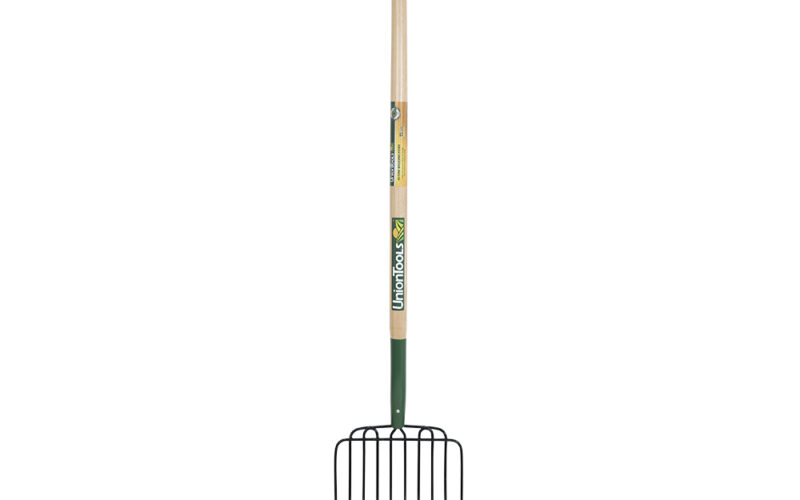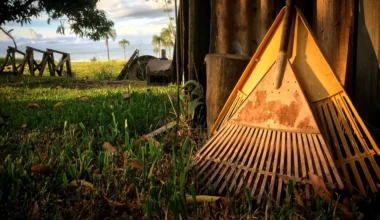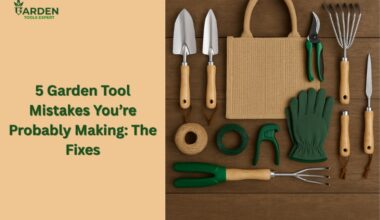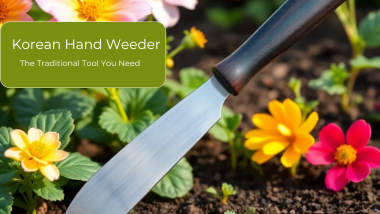Ever wondered why your garden tools seem to multiply faster than your plants? Among the many tools like trowels, spades, and rakes, two often-confused tools stand out: the bedding fork vs manure fork.
Garden tools vary widely in shape and size, each serving specific tasks. Forks, in particular, offer a diverse range. From digging forks to border forks, and from pitchforks to manure forks, each type has a unique role in gardening.
Knowing the difference between a bedding fork vs. manure fork is essential. While they may look alike, these tools have distinct designs and purposes. Choosing the right fork can greatly enhance gardening efficiency.
This guide will explore garden forks, their types, uses, and differences. Whether you’re experienced or new to gardening, this comparison will help you choose the right tools. Let’s dive in and learn about these important forks!
Understanding Garden Forks: Types and Uses
Garden forks are key for any gardener. They vary in type, each suited for different tasks. Let’s look at the different pitchfork types and compare farm implements to help you pick the right one for your garden.
Digging and Spading Forks
Digging forks have four strong, curved tines that easily go into the ground. Spading forks have four flat tines, sometimes with diamond or triangular backs, great for heavy soil. Both are excellent for breaking up soil and adding organic matter.
Border Forks
Border forks are smaller than digging forks. They have shorter, narrower tines, perfect for precise digging in small spaces or raised beds. If your garden is small or you work in tight spots, a border fork is a good choice.
Pitchforks and Manure Forks
Pitchforks have long handles, over 4 feet, with two or three curved, thin tines. They’re great for moving light materials like hay or straw. Manure forks, also called compost forks, have more tines (usually 5 or 6) that are thicker and closer together. These are for lifting manure, woodchips, or compost.
- Pitchforks: 3-5 round, tapered tines about 12 inches long
- Manure forks: 4-10 curved, round, fine tines about 12 inches long
When picking a garden fork, think about the material. Top-quality forks are made of stainless steel or forged carbon steel, known for their strength and lasting use. The right fork can make gardening easier and more efficient.
Bedding Fork vs Manure Fork: Key Differences
Understanding the differences between bedding forks and manure forks is key. These tools have different roles in managing animal bedding and waste. They are vital for farmers and stable owners.
Design and Structure
Bedding forks, also known as stable forks, have many fine tines close together. They are great for handling light materials like straw or wood shavings. Manure forks have fewer tines that are thicker and spread wider. They are perfect for heavier materials.
Intended Purpose
A bedding fork is mainly used to spread and manage animal bedding. It makes it easy to add fresh bedding and remove dirty materials. Manure forks are for tougher tasks, like cleaning stalls, moving compost, and handling dense waste.
Tine Configuration
Bedding forks have 10-14 thin, closely spaced tines. This helps keep fine bedding materials in place while letting small debris fall through. Manure forks have 4-10 curved, round tines, about 12 inches long, spaced farther apart. They are great for scooping up large clumps of manure or compost.
Choosing the right fork depends on your needs. For daily bedding tasks, a bedding fork is best. For handling heavier waste or compost, a manure fork is better. Both are crucial tools for efficient barn management.
The Bedding Fork: Features and Applications
Bedding forks are key for keeping horse stalls clean and managing horse care. They have fine tines perfect for handling light materials like straw, hay, and wood shavings. These materials are often used in animal bedding.
The tines on these forks are close together. This stops small pieces from falling through. It makes them great for a deep clean in stables. They help keep the place clean for animals and make removing dirty bedding easy.
Bedding forks are great for spreading new bedding and managing light materials in stables and barns. They make it easy to lift and spread bedding without straining stable workers. This makes daily cleaning tasks easier.
- Tine count: Bedding forks usually have 10-12 tines, more than standard manure forks
- Tine spacing: Closely spaced to prevent small particles from falling through
- Handle length: Often longer for better reach and leverage
- Material: Lightweight yet strong for easy use
Using a bedding fork helps keep your horses’ living area clean and comfy. It’s a vital tool for horse care, making stall maintenance easier. It also helps keep your horses healthy and happy.
The Manure Fork: Characteristics and Uses
Manure forks are key for managing stables. They have curved, round tines perfect for handling heavy stuff. These forks help keep stables clean and make removing manure easy.
Stable Cleaning
Manure forks are great for cleaning stables. They help remove manure and dirty bedding efficiently. The curved tines and wide spacing make scooping clumpy materials easy. This makes cleaning your stable simpler.
Compost Management
Manure forks are also great for compost. Use them to mix and aerate compost piles, helping them break down faster. They’re strong enough for heavy, wet compost.
Hay and Straw Handling
These tools are also good for handling hay and straw. They make feeding animals or managing storage easier. The design lets you lift and move big amounts of feed easily.
When picking a manure fork, think about how long it lasts and how easy it is to use. The Forever Fork has a curved basket to keep manure from falling out.
The Shaken Fork has a special trigger for different speeds. It can make cleaning your stable faster and easier.
Having explored the characteristics of manure fork, let’s look at factors to consider when choosing the right manure fork.
Choosing the Right Fork for Your Garden– Bedding Fork vs. Manure Fork
Finding the perfect fork for your garden can really change your work. Think about what you’ll use them for most. When choosing the right fork consider the following:
Assessing Your Garden Tasks
What you do in your garden determines the fork you need. Digging forks with four sharp tines are perfect for breaking up soil. Border forks are great for weeding and trimming edges. A manure fork is best for composting. Choose a fork that matches your main gardening tasks.
Handle Length and Material
The fork’s handle affects your comfort and how long you can work. Wooden handles feel good but might not last long. Fiberglass handles are strong and light. Pick a length that fits your height to avoid back pain. The right handle can prevent back pain.
Tine Strength and Durability
Strong tines are crucial for hard jobs. Forged forks cost more but last longer. For hard soils, choose heavy-duty forks. Stainless steel forks resist rust and stay sharp. A good fork can last years, making it a smart buy.
Comparing farm tools shows quality is important. High-end forks have longer warranties and better performance. Picking the right fork saves you time and effort in your garden.
Wrapping Up
Choosing between a bedding fork and a manure fork is crucial for efficient gardening and stable management. The bedding fork handles light materials like straw with ease, keeping animal bedding clean and comfortable.
Meanwhile, the sturdy manure fork tackles heavier tasks such as compost and manure removal, ensuring a tidy and productive environment. Understanding these distinctions helps you select the right tool for maintaining your garden or stable effectively.
Check other garden tools here.






